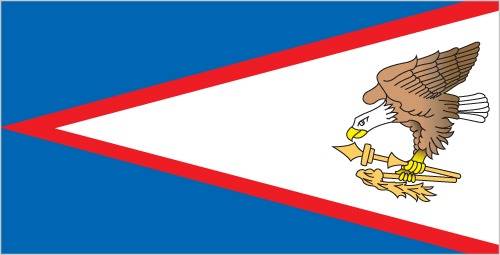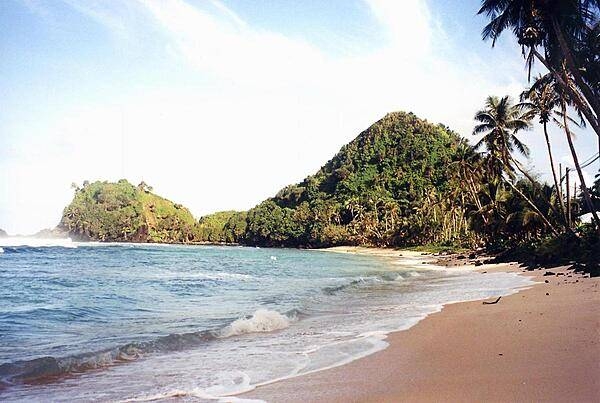Because American Samoa is an unincorporated, unorganized territory of the United States, not all provisions of the U.S. Constitution apply. Moreover, the United States has not provided an organic (charter) act setting forth a system of government. Instead, the U.S. secretary of the interior, who has had jurisdiction over the territory since 1951, gave American Samoa the authority to draft its own constitution (1967). The people are U.S. nationals (with the right to enter and reside in the United States) but not citizens. The territory’s chief executive, according to the constitution of 1967, is the governor. In 1976 American Samoans approved a referendum that provided for the popular election of the governor and lieutenant governor for four-year terms; prior to that time, the governor was appointed by the U.S. government. The minimum voting age is 18.American Samoa has a bicameral legislature, called the Fono, which meets for two sessions each year. It is autonomous in its disposition of local revenues and is the sole lawmaking body, although the governor has the power to veto legislation. The members of American Samoa’s House of Representatives (lower house) are elected by universal suffrage to two-year terms; one member is a nonvoting delegate elected from Swains Island. Members of the Senate (upper house) are chosen by councils of chiefs, in accordance with Samoan custom, to serve four-year terms. In 1981 the first official nonvoting delegate from American Samoa to the U.S. House of Representatives was elected. The United States is responsible for defense.
AS – American Samoa (US)

Blue, with a white triangle edged in red that is based on the fly side and extends to the hoist side. A brown and white American bald eagle flying toward the hoist side is carrying 2 traditional Samoan symbols of authority, a war club known as a “fa’alaufa’i” (upper; left talon), and a coconut-fiber fly whisk known as a “fue” (lower; right talon). The combination of symbols broadly mimics that seen on the US Great Seal and reflects the relationship between the US and American Samoa.
Flag courtesy of the CIA World Factbook

Map courtesy of the CIA World Factbook

One of the seven National Natural Landmarks located on the opposite side of Pago Pago Harbor, Rainmaker Mountain is a great mass of volcanic rocks extruded as molten magma during major episodes of volcanism that created Tutuila island.
Photo courtesy of the CIA World Factbook
Last updated on October 7, 2025
Government
Airspace
In addition to checking the FAA UAS Facility Map or SkyVector or Google Maps one should consider also FAA JO 7400.10G – Special Use Airspace which is an order, published yearly, providing a listing of all regulatory and non-regulatory special use airspace areas, as well as issued but not yet implemented amendments to those areas established by the FAA.
Drone Regulations
American Samoa government website just for reference.
Department of Port Administration just for reference.
Advanced Air Mobility (AAM) Regulations & Policies
None found by the author.
However, should you, the reader, happen to stumble across something to the contrary, please email the author at FISHE5CA@erau.edu and you may be mentioned in the ACKNOWLEDGEMENTS section of this book by way of thanks for contributing to this free eBook!
Advanced Air Mobility (AAM) News
None found by the author.
However, should you, the reader, happen to stumble across something to the contrary, please email the author at FISHE5CA@erau.edu and you may be mentioned in the ACKNOWLEDGEMENTS section of this book by way of thanks for contributing to this free eBook!
Short Essay Questions
Question 1
You have been hired by a Drone Startup Company. Your boss has immediately assigned this job to you.
They need you to prepare a one-page memo detailing the legalities of inspecting the shoreline for erosion at Pago Pago Harbor, pictured above.
They need you to mention any state laws and local ordinances.
They specifically want to know what airspace (insert pictures) you will be operating in, and whether or not you need an airspace authorization, with or without LAANC capability.
Lastly, there is a bonus for you if, as you scroll through this chapter, you find any typos or broken links!
Question 2
Do you need a certificate to fly UAS?
If so, how do you obtain one?
Are there fees associated with this?
If so, how much?
Question 3
May you operate beyond visual line of sight?
If so, what procedures must you follow?
Question 4
Does the country have UAM/AAM laws? If so, describe, citing the exact law.
Question 5
Are you aware of any new laws or policies not mentioned above? If so, describe, citing the exact law or policy.

